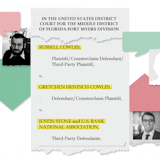Spire and Hiway plan to merge, creating the fourth largest credit union in Minnesota with $4 billion in assets.
If approved by members as expected, Spire and Hiway will have a much bigger Minnesota presence, ranking in size only behind Wings Financial, TruStone Financial and Affinity Plus credit unions.
Spire and Magnifi Financial have been jockeying for months for that coveted "fourth place" ranking in Minnesota. But the new merger will nearly double Spire's prior asset size and distance itself considerably from Magnifi.
"We are really excited," said Spire President and CEO Dan Stoltz.
While Falcon Heights-based Spire Credit Union has merged with 10 other credit unions in eight years, the Hiway deal would be its biggest in 89 years. The Spire board already has approved the deal.
The merged credit union would operate under Spire's charter, but the deal is proceeding as a merger of equals. Hiway Credit Union members must vote on the proposal on or before a meeting set for Sept. 13.
If all goes as planned, the newly merged entity will integrate and start operating under a yet-to-be decided name and brand by January. It would have 26 branches, 620 employees and 249,000 members.
For St. Paul-based Hiway Credit Union, a Spire partnership would offer its 92,000 members access to a much larger branch network and the chance to get more competitively priced loans and services, said Dave Boden, the credit union's CEO. Right now, Hiway only has four branches, including ones in Roseville and Woodbury that opened within the last two years.


